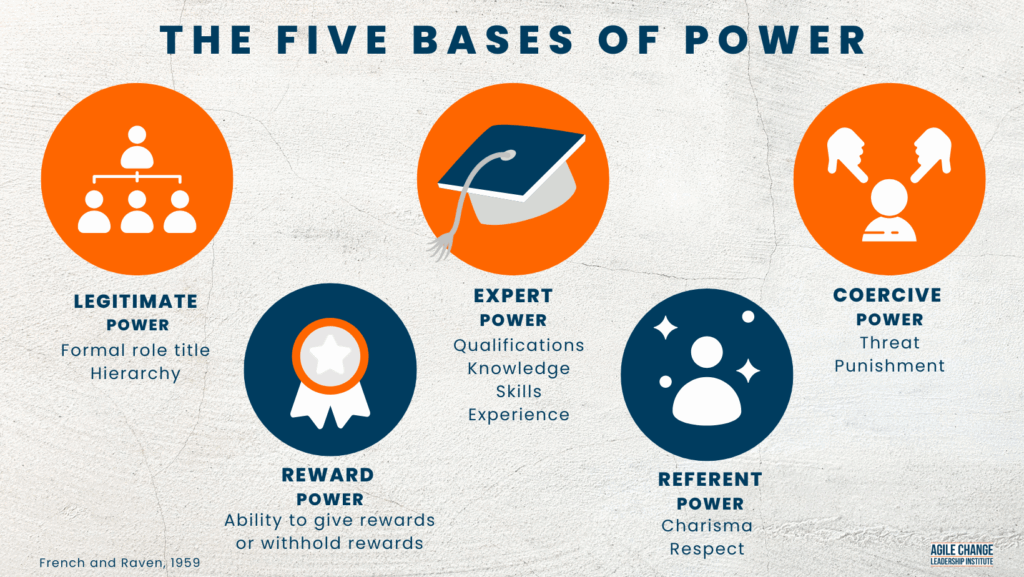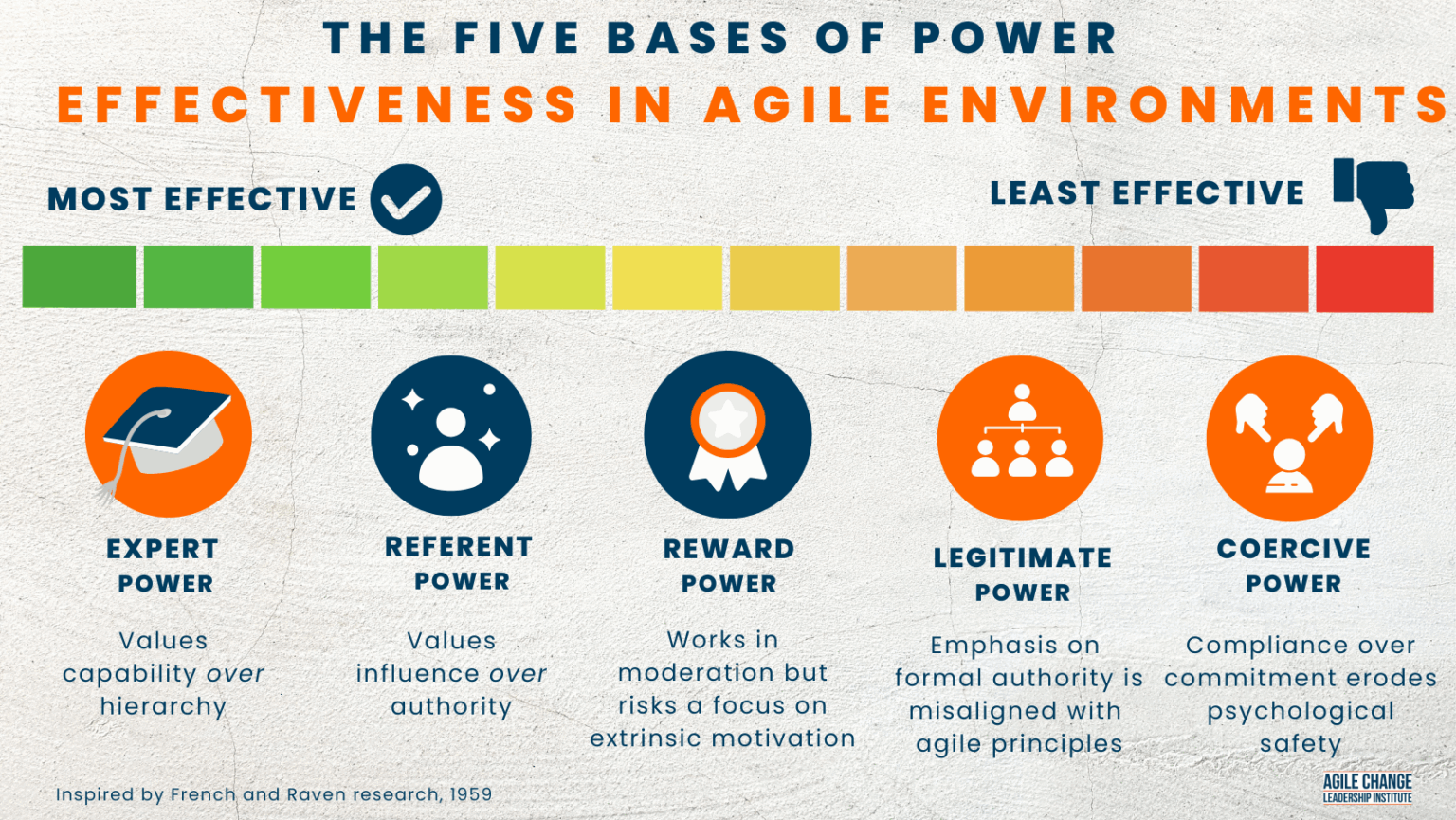By Lena Ross
In our Agile Change Leadership certificate program, we explore three leadership
approaches to support agile leadership in times of deep uncertainty:
Adaptive Leadership – being responsive over reactive
Distributed Leadership – placing value on informal leaders over formal leadership
Servant Leadership – focussing on service over desire for status
One of the reasons these three leadership styles work well in agile business
environments is that they rely on letting go of hierarchy and a control-centred
relationship with power. For many, this represents a shift in mindset.
We can explore these three agile leadership styles through a different lens that
considers the five power bases identified by French and Raven in 1959. Yes, that is
a long time ago! We read about these in management and leadership literature on
group dynamics and organisational behaviour. Interestingly, we continue to see
these power bases play out in organisational, community-based and political
landscapes.

French and Raven Model: The five bases of power
Research carried out by social psychologists John French and Betram Raven
divided power into five forms. Their work provided a framework for understanding
influence and leadership:
1. Legitimate power – granted through formal role title and/or hierarchy
2. Reward power – acquired through the ability to give/not give rewards
3. Expert power – this comes with specialist knowledge, skills or expertise
4. Referent power – related to charisma, being well-liked and respected
5. Coercive power – defined by the ability to punish or threaten punishment
Curiosity led us to take a closer look at these five power bases and rank them in
order, from most to least effective leadership in agile environments:
1. Expert Power – most effective
This type of power based on knowledge, skill, or expertise works best because:
- Agile environments value capability over hierarchy.
- When uncertainty is high, people respect leaders, formal and informal, who
demonstrate deep understanding and sound judgment. - Credibility through expertise builds trust quickly, especially when teams are
self-organising. - It is consistent with the notion of new power which suggest that power is held
and made by many in contrast to old power which is help by few and
commands
For example, a scrum master who has hands-on experience in agile delivery is more
likely to gain influence and buy-in.
2. Referent Power
Power derived from being respected, admired, or seen as a role model is highly
effective because:
- Agile leadership values influence over authority.
- Referent power builds psychological safety, which is crucial in volatile and
uncertain settings with relentless change. - It encourages followership through personal integrity and shared values,
especially when leaders model the desired behaviours and mindset.
For example, a leader who consistently demonstrates servant leadership and
empathy is more likely to build strong team cohesion.
3. Reward Power
Power based on the ability to give rewards is moderately effective. It works in
moderation and needs to be applied carefully because:
- It is useful to motivate short-term behaviours, such as completing a sprint or
meeting goals. - Overuse can lead to extrinsic motivation over intrinsic motivation, which is not
congruent with agile ways of working.
For example, while recognising team members in retrospectives can be helpful, keepin mind the intrinsic rewards of agile are autonomy, co-creation and purpose.
4. Legitimate Power
This type of formal power based on a formal position or role is less effective in agile.
Here’s why:
- Agile favours distributed decision-making and distributed leadership, along with informal leaders, over formal hierarchy.
- It can create barriers to open communication and innovation if used rigidly.
For example, a product owner who relies on their ‘title’ to make decisions and
delegate work may face resistance, or a dip in productivity, in a cross-functional
team.
5. Coercive Power
It’s no surprise that power based on fear, threats, or punishment is the least effective
in agile environments. In fact, it is also often damaging because it:
- Erodes trust, psychological safety, and collaboration which are the cornerstones of building productive agile environments.
- Can lead to compliance over commitment, which stifles innovation and
learning.
Consider the impact of a leader who pressures teams with threats of negative
consequences creating a climate of fear and reduced psychological safety.
The five bases of power remain a useful framework for understanding how leaders
apply influence. It is also a powerful reminder of how agile leadership represents a
shift from ‘command and control’ approaches to a more inclusive, adaptive and
collaborative style.
Recommended reading
Heimans, J. & Timms, H. (2018), New Power: How Power Works in Our
Hyperconnected World and How to Make It Work for You, Sydney, Macmillan.
Find out more about our Agile Change Leadership Certificate



